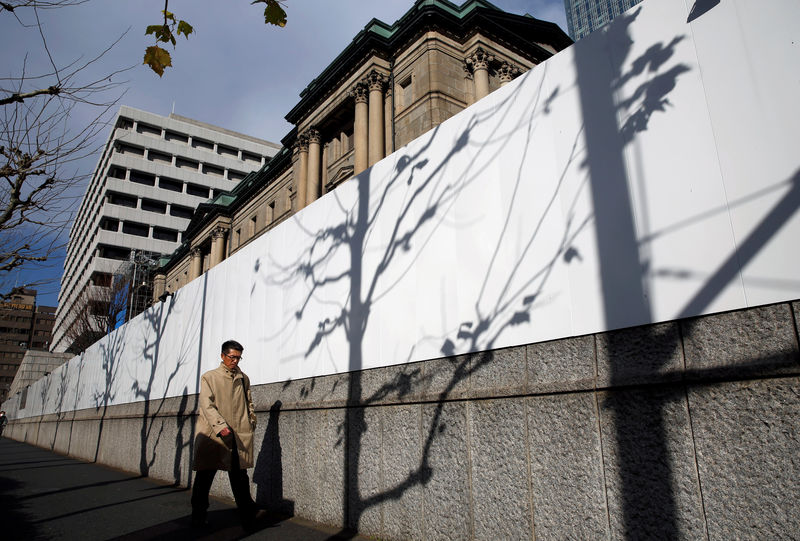 © Reuters. Man walks past the Bank of Japan building in Tokyo
© Reuters. Man walks past the Bank of Japan building in TokyoBy Yoshifumi Takemoto and Leika Kihara
TOKYO (Reuters) – Japan’s government will likely present to parliament its nominees of next central bank governor and deputy governors around mid- to late February at the earliest, sources familiar with the matter say.
There is a strong chance Bank of Japan Governor Haruhiko Kuroda will be reappointed when his five-year term ends in April, given premier Shinzo Abe’s recent comments praising him for boosting growth, government and parliament sources say.
But this is by no means not a certainty, the sources say. While many in the market are betting on Kuroda’s reappointment, some see the chance of other candidates such as Etsuro Honda, Abe’s former aide who has expressed interest in the post, landing the job.
Kuroda and his two deputy governors – career central banker Hiroshi Nakaso and former academic Kikuo Iwata – will see their terms end on April 8 and March 19, respectively.
Nominees for such high-profile positions need approval by both houses of parliament to become effective. The government usually submits its nominees for various posts in two rounds.
The BOJ nominees are likely to be in the second round and won’t be submitted to parliament until the first round gets approved, which may take until mid-February, the sources say.
That means the government’s nominees for BOJ governor and deputy governors won’t be presented to parliament until later this month or even early March, they say.
“It might not come until late February,” said a ruling party lawmaker familiar with the process, a view echoed by two other sources who spoke on condition of anonymity.
The timing will depend much on how smoothly the government can push through parliament the state budget for next fiscal year and find time to take the nominees’ list for vote.
It is a near certainty the government’s nominations will get the two-thirds majority needed to pass parliament, as Abe’s ruling coalition has enough seats in both houses of Diet.
The choice of the new BOJ leadership will be crucial as it would set the path of monetary policy and affect how quickly the central bank could follow in the footsteps of its U.S. and European peers in dialing back crisis-era stimulus steps.
While Kuroda has dismissed the chance of an early exit from easy policy, analysts see his reappointment as heightening the chance for a slow but steady shift toward monetary normalization.
The choice of candidates with more radical views like Honda, an advocate of big fiscal spending financed by faster central bank money printing, may jolt markets as investors may see it as a break away from the current policy framework, analysts say.
The government will likely fill one of the two deputy posts with a career central banker with deep expertise on markets and technicalities of monetary policy, the sources say.
A reappointment of Nakaso or an appointment of BOJ Executive Director Masayoshi Amamiya, who masterminded many of the bank’s monetary policy steps, are seen as possibilities, they say.
Fusion Media or anyone involved with Fusion Media will not accept any liability for loss or damage as a result of reliance on the information including data, quotes, charts and buy/sell signals contained within this website. Please be fully informed regarding the risks and costs associated with trading the financial markets, it is one of the riskiest investment forms possible.
Source: Investing.com




























